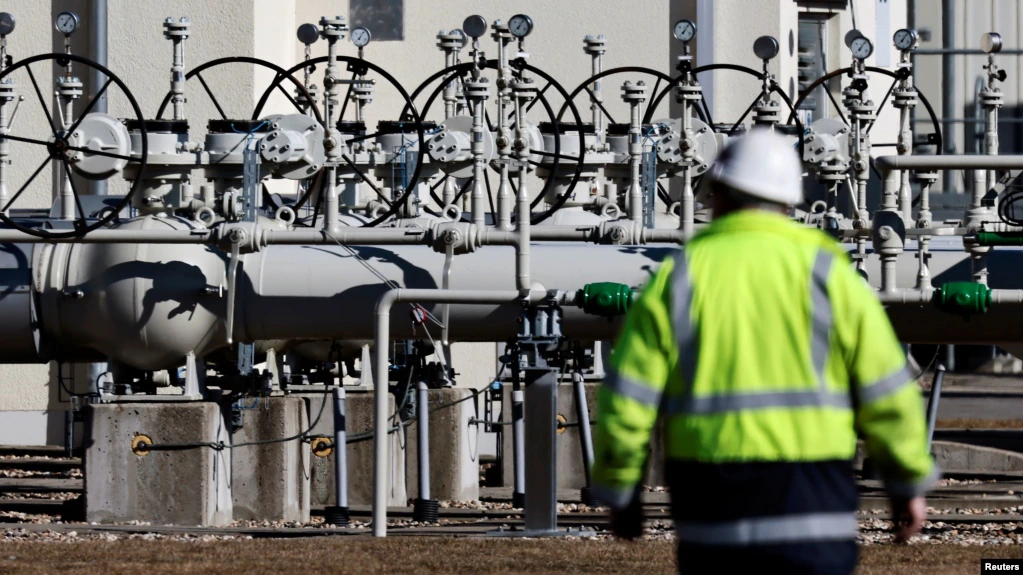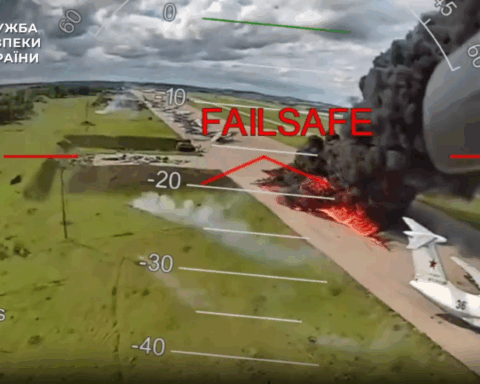U.S. President Joe Biden turned heads last week by warning Russian President Vladimir Putin is “not joking” when he issues thinly veiled threats of using weapons of mass destruction as his invasion of Ukraine struggles, potentially threatening his 23-year hold on power.
Days earlier, Senator Marco Rubio, a Republican member of the upper U.S. legislative chamber’s intelligence committee, also made headlines when he said he feared Russia could launch a conventional strike against a NATO member to impede the alliance’s military aid to Ukraine.
But analysts say Putin may be more likely to use other, less kinetic means to try to intimidate the West into curtailing its support for Ukraine such as targeting critical offshore energy pipelines and data cables, as well as satellites orbiting Earth.
“All of these methods of attack would be more logical for Russia to pursue” than a direct military attack on NATO facilities or use of a nuclear weapon, said Sean Monaghan, an analyst at the Washington-based Center for Strategic and International Studies who previously served at the British Defense Ministry.
For one thing, Monaghan said, a Russian strike targeting a weapons supply route in a NATO country such as Poland would trigger the 30-member Western military alliance to respond.
“The war with Ukraine is not existential [for Russia]. It’s a war of choice,” he said. “A war with NATO would be existential.”
Nord Stream ‘Sabotage’
In the case of undersea energy pipelines, there are accusations Russia has already carried out such an attack.
Blasts that hit two Russian natural gas export pipelines to Germany late last month were a sign of things to come, Monaghan said, calling it a “precursor to more brazen hybrid attacks.”
Russia-controlled Nord Stream 1 and Nord Stream 2 pipelines suffered extensive damage in late September when several hundred pounds of explosives were detonated, according to Danish and Swedish investigators, in what Biden and other Western officials have called sabotage.

Officials have largely avoided direct accusations, but many in the West say they believe Russia sabotaged its own pipelines to deter Europe from aiding Ukraine. Russia has been curtailing natural gas exports to Europe for months, driving up prices to record highs and steeping the continent’s energy crisis. The Kremlin has denied the accusations and blamed the United States, which had opposed the pipelines in the first place.
The pipeline blasts deepened concerns in the West about Russian attacks against European subsea pipelines and cables.
On October 8, damage to cables on land caused an hours-long stoppage of all rail traffic in northern Germany. The state-owned railway operator blamed “sabotage” and launched an investigation into who was behind the interference.
Monaghan said attacks against such critical infrastructure are deniable and ambiguous and “purposely do not cross the threshold of divisive [military] response,” he said.
William Courtney, a former career diplomat who took part in U.S.-Soviet defense talks, also said Russia is more likely escalate by attacking a pipeline, Internet cable, or satellite.
In addition to other factors, a strike against Poland might not be successful, he said — the country has strong armed forces and is on high alert.
“Rather than striking the territory of a NATO member, Russia might look at a target that is more ambiguous in terms of how NATO would respond,” said Courtney, who is now an analyst with Washington-based RAND Corporation think tank.
Estonia Cyberattack
Russia has carried out major hybrid attacks against NATO members and other countries in the past.
In 2007 Russia launched a weeks-long, coordinated cyberattack against Estonia, targeting websites of the Baltic nation’s government, banks, telecommunications companies, Internet providers, and media outlets after Tallinn relocated a controversial Soviet war memorial that had stood in the center of the city. At the peak of the attack, bank cards and mobile-phone networks were temporarily frozen.
Russia has been suspected in other incidents.
In 2021, underwater cables off Norway’s coast were severed and removed. The sensors attached to the cables had the ability to pick up information about Russian submarines, leading some to believe that Moscow may have been behind the incident.
Then, on January 7 of this year, one of two undersea fiber-optic cables that provide Internet and communications links between mainland Norway and the Svalbard archipelago in the Arctic Ocean was knocked out.
The cables also provide power for Space Norway to run the Svalbard Satellite Station, one of only two ground stations that can download data from polar-orbiting satellites.
Russia had previously expressed concern that the SvalSat site could be used to download data from military satellites as well as commercial satellites.
Also in January, Admiral Sir Tony Radakin, the chief of Britain’s Defense Staff, raised concerns about the “phenomenal increase in Russian submarine and underwater activity” over the past two decades.
In an interview with The Times of London, he said Russia has the naval capability to put at risk and “potentially exploit” undersea cables.

Monaghan said although subsea communications networks are resilient, there is still a large amount of data traffic that goes through a small number of cables under the Baltic Sea, the North Sea, and the Atlantic Ocean.
“Western economies are reliant on this data exchange as we have predominantly digital knowledge economies, and Russia knows that,” he said. “So, I do see the gas pipeline explosions as a kind of an implicit warning around advanced undersea capabilities, which NATO has to respond to.”
While Russia has suffered major battlefield setbacks in Ukraine, it has “extremely potent maritime, space and cyberspace forces that are capable of inflicting damage where it hurts,” Monaghan said.
Satellite Targets
Russia’s potential targets are not just below the sea.
Last November, Russia carried out its first test of a direct-ascent anti-satellite missile (ASAT), destroying a Soviet-era target in low-Earth orbit and raising concerns abroad about its space capabilities. The weapon was fired from the Earth’s surface as the satellite passed overhead.
Konstantin Vorontsov, head of Russia’s delegation to the United Nations Office for Disarmament Affairs, said last month the uses of commercial and civilian satellite assets by the United States and its allies to assist Ukraine “constitute indirect involvement in military conflicts” and “quasi-civilian infrastructure,” as he put it, “may become a legitimate target for retaliation.”
Ukraine’s forces have relied heavily upon satellite Internet access to carry out operations against Russian forces.
Elon Musk’s SpaceX has sent more than 15,000 Starlink terminals to Ukraine to boost Internet coverage and connectivity following a Russian cyberattack against its critical infrastructure.
Planet Labs and Maxar Technologies, commercial satellite imagery firms, have also provided key intelligence by sharing high-resolution images of the battlefield from above.
Courtney said NATO is probably now undertaking more surveillance of vulnerable infrastructure. He said he could not speculate how NATO would respond to such an attack.
Todd Prince






